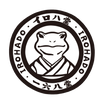Marriot store

Shin Edo dyeed Maruki store
Tradition Tokyo Infected Yukata and Return
Somehow nostalgic, but now
Traditional Tokyo infecting with scales and sensitivity
Meiji Toshiro, Marubo shop that was founded as a wholther-in-house wholesaurant. Infected informed by hand wipe and yukata. Tokyo is a three-year-old area for both Hamamatsu and Osaka. This dyeing technique born in the Meiji era is used as a yukata and handwef to a seasonal festival to a seasonal festival, and it is still an essential technology. Married shops have been laid with lots of patterns and designs in their history and adding color. We have a good night and handweing in Tokyo inexpressive Tokyo. A huge number of design-type paper, reprint the design or get a new handle with a concession. Currently, we are making things as a culture of "inflow" not limited to the application.
What is an infectiousness (Chuhen)
Married shops are mainly manufactured by rising and fabric and yukata. Influence is a natural type dyeing technique that gave birth to the Meiji period. Paper with a mold paper and make a part of the defeat along the handle pattern, and pour a dye with medicine can (kettle) and dye various patterns. It became called "inflow" from that situation. At that time, it was revolutionary as a dyeing technique that has become a massive production for the first time, but now, it is still a different way of mechanical mass production with mechanical mass production of print staining. It is loved as a technique.1. Type paper
Type paper is produced mainly astringent paper on a Japanese paper by the hand of the type sculpture. The engraved travel paper is crimped with a fine mesh silk called "", called "Sakai". This missionary tightness is fixed, and one pattern is fixed. Since the production volume of the material is currently decreasing, it has become common to use chemical alternative materials such as tetron, synthetic paper and.
2. With type
Use the type paper to add a disaster glue to the fabric. Typing the long dough, and then add the process of adding the mold. The layers are also 20 to 40 minutes. Since the dye is not dyed and the dye is not dyed, it will use the mechanism to dye the handle pattern.
3. Stain
Pour the dye from the top of the fabric with a folding screen for the specified length. Then, through the dough from the top to the bottom of the fabric overlapping by decompressing and inhaled with a dedicated machine. After that, it is characterized by the fact that it is stained with an infect way to turn over the fabric and work the same work.
4. Wash and dry
Dyed fabric washes with water to drop extra glue and dye. And after the dewatering machine, it will be dried on an outdoor yaga with a height of 10 m or more. The situation is also an emotional scene that has been a unique emotional factory since ancient times.
5. Finish
If it wipe it wipe it, cut it with a specified length and knock it. In addition, if it is a yukata, it will be a round roller or tailoring, and it will be finished along the customer's request and will be delivered. As mentioned above, all the processes of the inflow are manually performed by a professional craftsman. However, even if it looks at the same dyeing, the expression and texture is different at one point, or there is a difference between the time when the same order content is produced. Such as such, the unstability that can be disadvantaged "fluctuation" "play" is actually the most lovable point of the order. Everybody is fortunately I would appreciate yourself. Surely you will be able to enjoy the taste.Process of treatment manufacturing process (in Married shop HP)
http://shinedozome.com/PRODUCTS quoted



